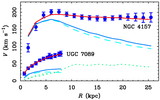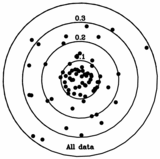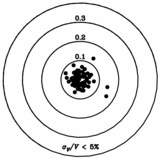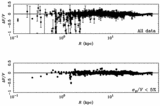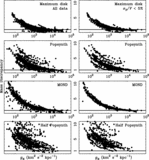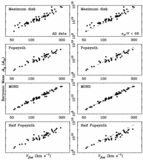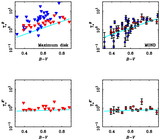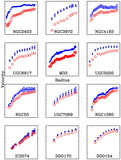Image Details
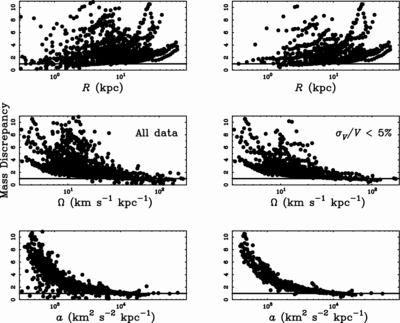
Caption: Fig. 4.
Mass discrepancy ﹩\mathstrut{\cal D} =V^{2}/ V^{2}_{b}﹩ as a function of various observed scales: radius (top), orbital frequency ﹩\Omega =V/ r﹩ (middle), and centripetal acceleration ﹩a=V^{2}/ r﹩ (bottom). In the panels on the left all data are shown; on the right are shown those data with high accuracy (﹩\sigma _{V}/ V< 5\% ﹩). Each point represents one resolved point within each galaxy, as in Fig. 3. The horizontal line shows ﹩\mathstrut{\cal D} =1﹩ where there is no mass discrepancy: baryons suffice to explain the observed motions here. There is a clear organization of the data with respect to acceleration. The mass discrepancy only becomes apparent (﹩\mathstrut{\cal D} > 1﹩) below an acceleration scale of ﹩a_{0}\approx 3700﹩ km2 s−2 kpc−1.
Copyright and Terms & Conditions
© 2004. The American Astronomical Society. All rights reserved. Printed in U.S.A.


